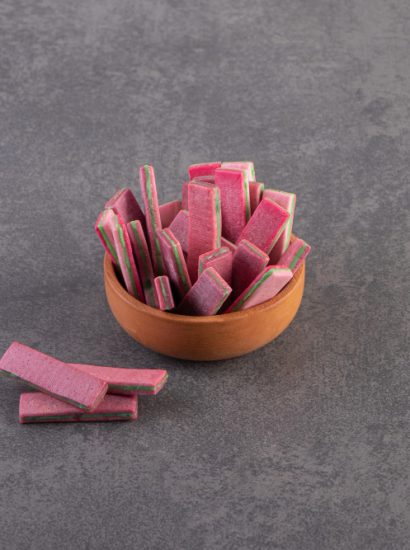Marble has long been associated with beauty, grace, and permanence. From ancient monuments to modern memorials, marble has served as a material that conveys respect, remembrance, and artistry. Among the many uses of marble, one of the most enduring is in the creation of tombstones. Classic marble tombstones symbolize not only the resting place of loved ones but also the timeless values of honor and legacy. This article explores the elegance, durability, and cultural significance of marble tombstones, offering insights into why they remain a preferred choice for memorials.
The Historical Significance of Marble in Memorial Art
Marble has been used in monuments and tombs for thousands of years. The Greeks and Romans employed it to craft temples, statues, and elaborate burial markers. Its smooth texture and ability to hold fine detail made it ideal for carving inscriptions and symbolic motifs. During the Renaissance, marble became synonymous with artistry and eternal beauty, adorning cathedrals and sculptures that celebrated life and death. Over time, marble tombstones evolved from simple slabs to intricately designed memorials, reflecting the craftsmanship and devotion of different eras. Today, they remain a link between tradition and contemporary remembrance.
Why Choose Marble for Tombstones
Families choose marble tombstones for several compelling reasons. The stone’s natural veining and luster make each piece unique, giving every memorial an artistic individuality. Marble’s fine grain allows for precise carving, making it ideal for inscriptions, portraits, and detailed ornamentation. Moreover, marble exudes a sense of dignity and luxury that aligns with the solemnity of memorial spaces. Its timeless beauty can withstand decades, symbolizing the endurance of memory and love.
While other materials like granite and limestone have become popular, marble continues to hold a special place for those seeking elegance and sophistication in memorial design.
The Types of Marble Used in Tombstones
Not all marble is the same. The stone varies in color, pattern, and composition depending on its origin. Some of the most common types used in tombstone creation include:
- White Marble: Known for its purity and classic appearance, often used for traditional memorials.
- Carrara Marble: Originating from Italy, it features subtle gray veining and is famous for its use in Renaissance sculptures.
- Black Marble: Offers a striking, contemporary look, often used for contrast and bold inscriptions.
- Green and Red Marble: These varieties add color and individuality, ideal for custom or thematic memorials.
Each type provides its own charm, allowing families to choose a marble that reflects the personality or preferences of their loved one.
Craftsmanship and Carving Techniques
The artistry behind marble tombstones requires skill, patience, and precision. Craftsmen often begin with detailed sketches or digital designs before shaping the marble using specialized tools. Modern technology, including laser engraving, complements traditional hand carving by enabling intricate lettering and imagery. Despite these advancements, many artisans still value the traditional method, where every chisel mark reflects human touch and dedication. The combination of artistry and durability transforms marble from raw stone into a lasting symbol of remembrance.
Polishing is the final step that gives the tombstone its signature sheen. It enhances the natural veining of the marble and adds a reflective finish that stands out against the greenery of cemeteries.
Design Styles and Symbolism
The design of a marble tombstone often carries deep symbolism. Classic designs feature religious icons, floral motifs, or geometric shapes representing peace, eternity, and purity. Crosses, angels, doves, and laurel wreaths are common symbols carved into marble memorials. Modern designs, however, may incorporate minimalist lines or personalized imagery such as portraits, quotes, or family crests.
The choice of design often reflects cultural beliefs, personal values, and artistic preference. Whether traditional or modern, marble tombstones offer the flexibility to create a meaningful and visually captivating tribute that tells a unique story.
Durability and Longevity of Marble Tombstones
Despite its delicate beauty, marble is a durable stone capable of lasting for generations when properly maintained. Its resilience against wind, sun, and rain makes it suitable for both indoor mausoleums and outdoor cemeteries. Over time, however, environmental exposure can cause marble to lose some of its polish or develop a weathered patina. Many people view this natural aging process as part of the stone’s charm, symbolizing the passage of time and the endurance of memory.
To preserve its appearance, occasional cleaning and protection from acid rain or pollution are recommended. With care, a marble tombstone can maintain its elegance for centuries, as evidenced by ancient monuments that still stand today.
Maintenance and Care Tips
Proper care ensures that marble tombstones retain their beauty and structural integrity. Cleaning should be gentle, using soft cloths or brushes with mild soap and water. Harsh chemicals or acidic cleaners can damage the surface and cause discoloration. For deeper stains or biological growth like moss, a professional conservator can provide restoration without harming the stone.
Regular inspection helps detect any cracks or erosion early. Some families apply a protective sealant every few years to minimize moisture absorption. Caring for a marble tombstone is not just maintenance—it is an act of ongoing remembrance and respect for the departed.
Comparing Marble with Other Tombstone Materials
While marble is known for elegance, it differs from other materials in several ways. Granite, for example, is harder and more resistant to weathering, making it ideal for long-term durability. However, granite lacks the soft texture and warmth of marble. Limestone and sandstone offer natural aesthetics but are more porous and prone to erosion. Bronze memorials provide a metallic sheen but do not offer the same traditional charm.
Ultimately, the choice depends on personal preference, budget, and desired appearance. For those seeking a combination of artistic beauty, historical significance, and symbolic depth, marble remains the preferred material.
The Emotional and Cultural Impact of Marble Memorials
Beyond its physical qualities, marble holds emotional and cultural significance. It serves as a bridge between life and legacy, helping families express love and remembrance in a tangible form. The visual serenity of marble tombstones contributes to the tranquil atmosphere of cemeteries, encouraging reflection and peace. Across cultures, marble has been used to honor heroes, artists, and everyday individuals alike, symbolizing purity and eternal rest.
From grand mausoleums to modest headstones, marble conveys respect and permanence. It reminds us that beauty and memory can coexist in harmony, turning loss into a lasting tribute.
Conclusion
Classic marble tombstones embody a perfect union of artistry, durability, and emotional expression. Their smooth finish, natural veining, and timeless presence have made them a favored choice for centuries. Although they require care and attention, the reward lies in their unmatched elegance and symbolic depth. Each marble tombstone stands as a silent testament to love, memory, and the enduring nature of human legacy.
Choosing marble means choosing to honor a life with grace and permanence. Whether crafted in a traditional or modern design, a marble tombstone continues to speak across generations, preserving both the name and the spirit of the departed with timeless dignity.
FAQs
1. How long do marble tombstones last?
With proper care, marble tombstones can last for centuries. However, exposure to harsh weather and pollution can cause gradual fading or erosion. Regular maintenance helps extend their lifespan and preserve their beauty.
2. What makes marble tombstones different from granite ones?
Marble tombstones are valued for their smooth texture and elegant appearance, while granite is harder and more resistant to weathering. Marble allows for more intricate carvings, making it ideal for artistic designs.
3. Can marble tombstones be customized?
Yes, marble is highly customizable. Families can choose different shapes, sizes, colors, and carvings. Inscriptions, portraits, and symbols can be added through engraving or laser etching.
4. How should I clean a marble tombstone?
Use soft cloths or brushes with mild soap and water. Avoid acidic or abrasive cleaners, as they can damage the surface. For tough stains or restoration, consult a professional conservator.
5. Is marble an expensive option for tombstones?
Marble tends to be more costly than materials like limestone or granite due to its quality and craftsmanship. However, many families consider the cost worthwhile for its elegance, historical value, and lasting beauty.
Also read: Prague Brothel Regulations: A Look at the Legal and Social Landscape









